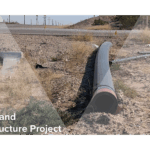
Phase 1 Environmental Site Assessments (ESAs) play a critical role in identifying potential environmental risks and protecting the environment. These assessments are an essential step in any real estate transaction, as they provide stakeholders with valuable information about the historical uses of a property and any potential contamination that may be present.
Understanding the Importance of Phase 1 Environmental Site Assessments
Phase 1 Environmental Site Assessments are designed to evaluate the environmental condition of a property and assess its potential impact on human health and the environment. They are conducted in accordance with industry standards, such as the American Society for Testing and Materials (ASTM) E1527-13, which provides guidelines for conducting Phase 1 ESAs.
One of the primary objectives of a Phase 1 Assessment is to identify Recognized Environmental Conditions (RECs), which are defined by ASTM E1527-13 as the presence or likely presence of any hazardous substances or petroleum products on a property due to current or past activities. The identification of RECs can help stakeholders make informed decisions about the purchase, development, or management of a property.
The Role of Phase 1 Assessments in Environmental Protection
Phase 1 Assessments play a crucial role in protecting the environment by identifying potential sources of pollution or contamination. By evaluating the historical uses of a property, assessing the potential for contamination, and recommending further investigation or remediation, Phase 1 Assessments help prevent the spread of hazardous materials and contribute to the preservation of natural resources.
Key Components of a Phase 1 Assessment
A Phase 1 Assessment typically consists of several key components. Firstly, an initial site inspection and data collection are conducted to gather information about the site’s current and historical uses. This includes reviewing site plans, historical records, aerial photographs, and conducting interviews with past and present property owners.
The second component involves a thorough review of the property’s historical activities, including any previous use that may indicate potential contamination, such as gas stations, industrial operations, or waste disposal sites. This historical review helps establish a baseline understanding of the site’s environmental history.
The third component of a Phase 1 Assessment involves evaluating the potential environmental risks associated with the property. This includes conducting a visual inspection of the site, sampling soil and groundwater, and assessing the potential for the release or migration of hazardous materials. By identifying potential risks, stakeholders can make informed decisions about the future use or development of the property.
The Process of Conducting a Phase 1 Environmental Site Assessment in Rockwall
Conducting a Phase 1 Environmental Site Assessment in Rockwall involves a systematic and thorough process that follows industry best practices. The assessment is typically performed by qualified environmental professionals who have expertise in assessing potential environmental risks.
Initial Site Inspection and Data Collection
The first step in the process is to conduct an initial site inspection and collect relevant data about the property. This includes observing the site, documenting any visible signs of contamination or potential sources of pollution, and gathering information about the property’s previous and current uses.
The environmental professional will also review historical records, such as property deeds, permits, and regulatory files, to gain insights into the site’s historical industry operations or activities that may have the potential to impact the site’s environmental condition. The data collection phase is crucial as it provides a comprehensive understanding of the site’s history and potential risks.
Historical Review of the Site
Following the initial site inspection, a historical review of the property is conducted. This involves researching public records, reviewing historical aerial photographs, and conducting interviews with past and present property owners or occupants. The objective of the historical review is to identify any past uses of the property that may have led to environmental contamination.
For example, the property may have been previously used for activities such as manufacturing, chemical storage, or waste disposal, which could indicate potential environmental risks. By understanding the property’s historical uses, environmental professionals can assess the likelihood of contamination and potential impact on the site.
Evaluation of Potential Environmental Risks
The final step in the Phase 1 Assessment process is to evaluate the potential environmental risks associated with the property. This includes assessing the likelihood of contamination, the presence of potential pollution sources, and the potential for migration of hazardous materials.
Environmental professionals may collect soil and groundwater samples to analyze for the presence of contaminants. They may also evaluate the property’s proximity to known pollution sources, such as landfills or industrial facilities, and consider any regulatory requirements or standards in Rockwall to determine compliance.
Based on the findings of the Phase 1 Assessment, environmental professionals provide recommendations for further investigation or remediation, if necessary, to address any identified environmental risks. This information is crucial for stakeholders to make informed decisions about real estate transactions, property development, or ongoing site management.
Regulatory Framework for Environmental Site Assessments
Phase 1 Environmental Site Assessments are guided by a regulatory framework that includes federal and state environmental laws, as well as local regulations in Rockwall. These laws and regulations ensure that environmental assessments are conducted in a standardized and consistent manner, thereby protecting public health and the environment.
Federal and State Environmental Laws
Several federal and state environmental laws govern the conduct of Phase 1 Environmental Site Assessments. The Comprehensive Environmental Response, Compensation, and Liability Act (CERCLA), also known as Superfund, and the Resource Conservation and Recovery Act (RCRA) are two prominent federal laws that establish the framework for environmental assessments and remediation.
State environmental agencies may also enact their own regulations that govern the conduct of phase 1 assessments. For example, in Texas, the Texas Commission on Environmental Quality (TCEQ) provides guidelines and requirements for conducting environmental assessments.
Compliance with Rockwall City Regulations
In addition to federal and state regulations, environmental assessments in Rockwall must comply with local regulations and standards. These may include specific requirements for reporting, sampling, or risk assessment that are unique to the city or county. Compliance with local regulations ensures that assessments consider the specific environmental concerns and characteristics of the Rockwall area.
Interpreting the Results of a Phase 1 Environmental Site Assessment
Interpreting the results of a Phase 1 Environmental Site Assessment requires a thorough understanding of the assessment process and the significance of various findings. It is important to identify any Recognized Environmental Conditions (RECs) and assess their potential impact on the property and stakeholders involved.
Identifying Recognized Environmental Conditions (RECs)
During the assessment, environmental professionals thoroughly review the property’s history and current condition to identify any RECs. RECs are typically associated with hazardous substances or petroleum products that may pose a threat to human health or the environment.
RECs can include past usage of the property for activities such as chemical storage, waste disposal, or manufacturing that may have resulted in contamination. It is important to identify these conditions to understand the potential risks and develop a plan to address them.
Recommendations for Further Investigation or Remediation
After identifying any RECs, environmental professionals provide recommendations for further investigation or remediation, if necessary. These recommendations are crucial for stakeholders, such as property owners, prospective buyers, or developers, to understand the potential risks and liabilities associated with the property.
Further investigation may involve additional sampling or testing to confirm the presence or extent of contamination, while remediation may include cleanup activities or containment measures to mitigate the identified risks. By following these recommendations, stakeholders can take appropriate measures to protect human health and the environment.
The Impact of Phase 1 Environmental Site Assessments on Real Estate Transactions
Phase 1 Environmental Site Assessments have a significant impact on real estate transactions, influencing both the value of the property and the legal implications for buyers and sellers.
How Assessments Influence Property Value
Properties with a clean Phase 1 Assessment report are generally more attractive to potential buyers and lenders. A favorable assessment can enhance the property’s marketability and increase its value. On the other hand, properties with identified RECs may require additional investment for investigation, remediation, or ongoing management, which can affect their market value.
Buyers and lenders rely on Phase 1 Assessments to evaluate the potential risks and liabilities associated with a property. A thorough assessment provides confidence in the property’s condition, allowing buyers to make informed decisions and lenders to assess the level of risk associated with providing financing.
Legal Implications for Buyers and Sellers
Phase 1 Environmental Site Assessments also have legal implications for buyers and sellers. Buyers can use the findings from a Phase 1 Assessment to negotiate purchase agreements and allocate responsibility for any necessary investigation or cleanup. Sellers, on the other hand, can use a favorable assessment report to demonstrate the property’s environmental compliance and minimize potential liabilities.
In some cases, if a Phase 1 Assessment does not uncover any significant environmental risks or RECs, it can provide protection against liability under certain laws, such as the Innocent Landowner Defense under CERCLA. This defense helps shield buyers from liability for cleanup costs associated with preexisting contamination that was unknown at the time of purchase.
Conclusion
Rockwall Phase 1 Environmental Site Assessments are a valuable tool for uncovering potential environmental risks and protecting the environment. By evaluating a property’s historical uses, assessing the presence of potential contaminants, and providing recommendations for further investigation or remediation, these assessments enable stakeholders to make informed decisions about real estate transactions while safeguarding the environment. Compliance with relevant federal, state, and local regulations ensures that assessments are conducted consistently and in a standardized manner. The results of a Phase 1 Assessment can have a significant impact on property value and legal implications for buyers and sellers, making them an essential component of any real estate transaction in Rockwall.
Ready to ensure your Rockwall property is environmentally sound and compliant with all regulations? Look no further than ESE Partners. Our team of expert environmental engineers and scientists is equipped to handle the complexities of Phase 1 Environmental Site Assessments and beyond. With a commitment to responsible business advancement and community well-being, ESE Partners offers tailored solutions to meet your unique needs. Don’t let environmental concerns stall your progress. Request A Proposal today and move forward with confidence!








